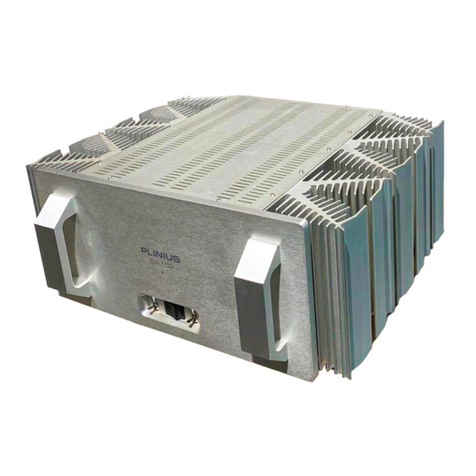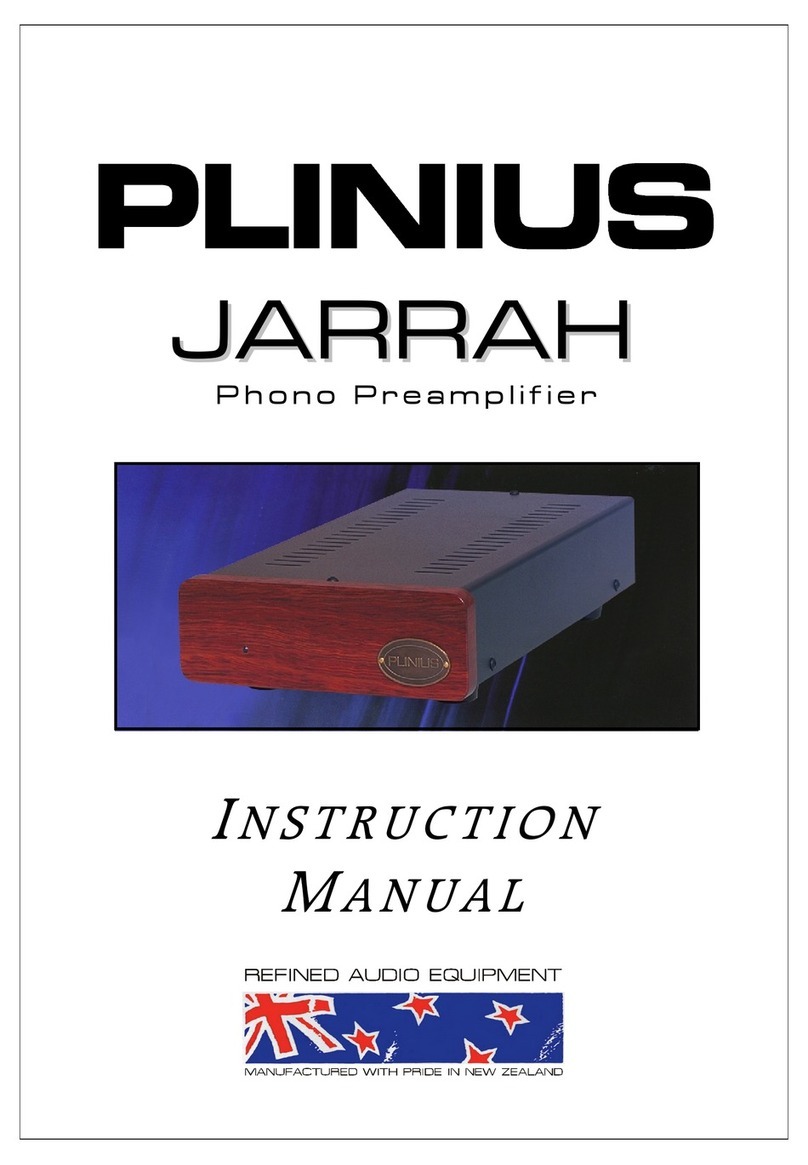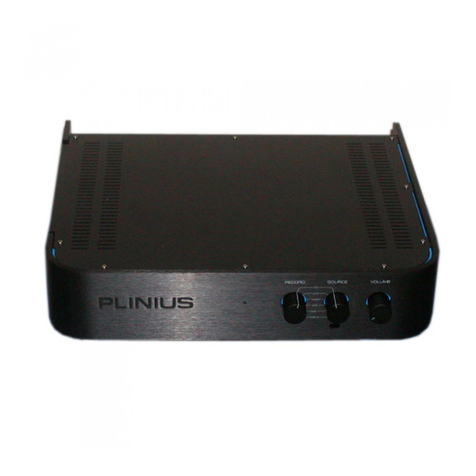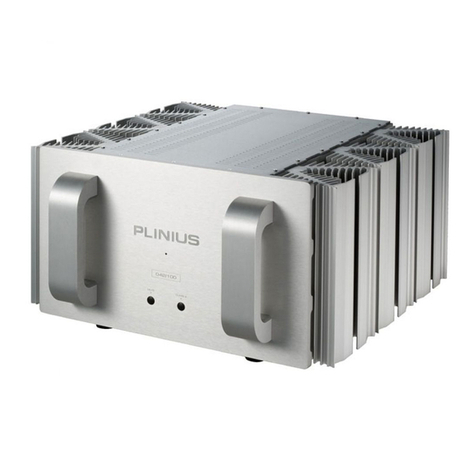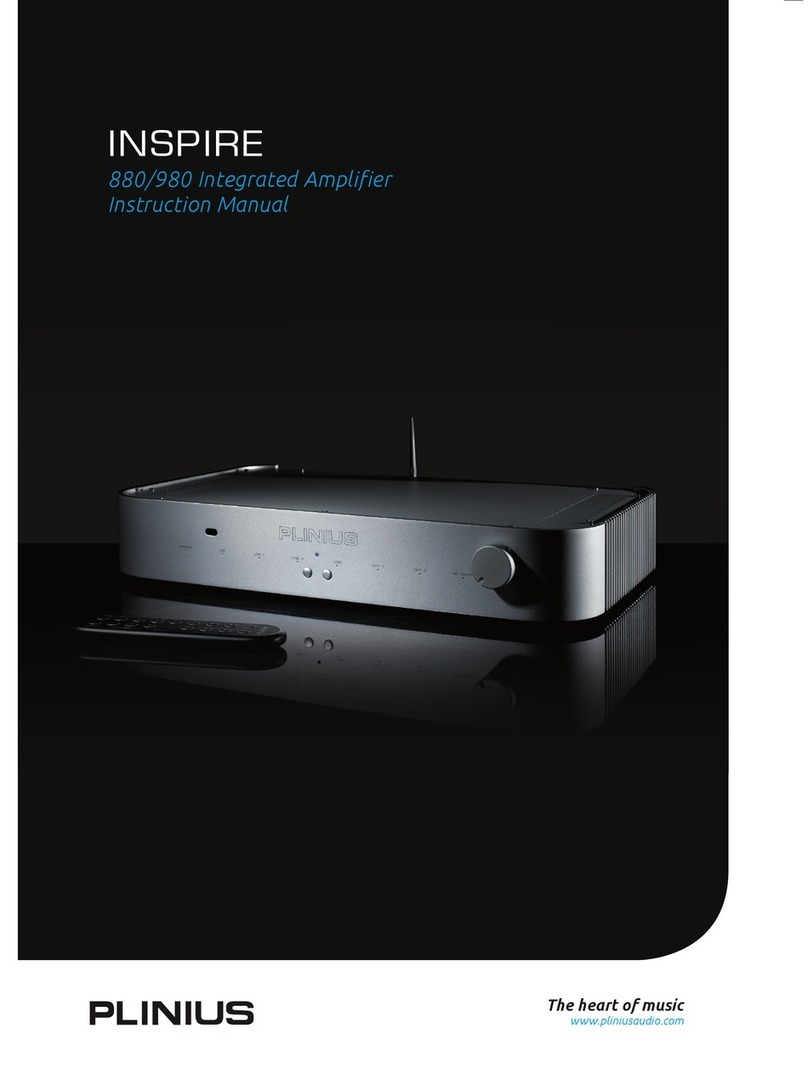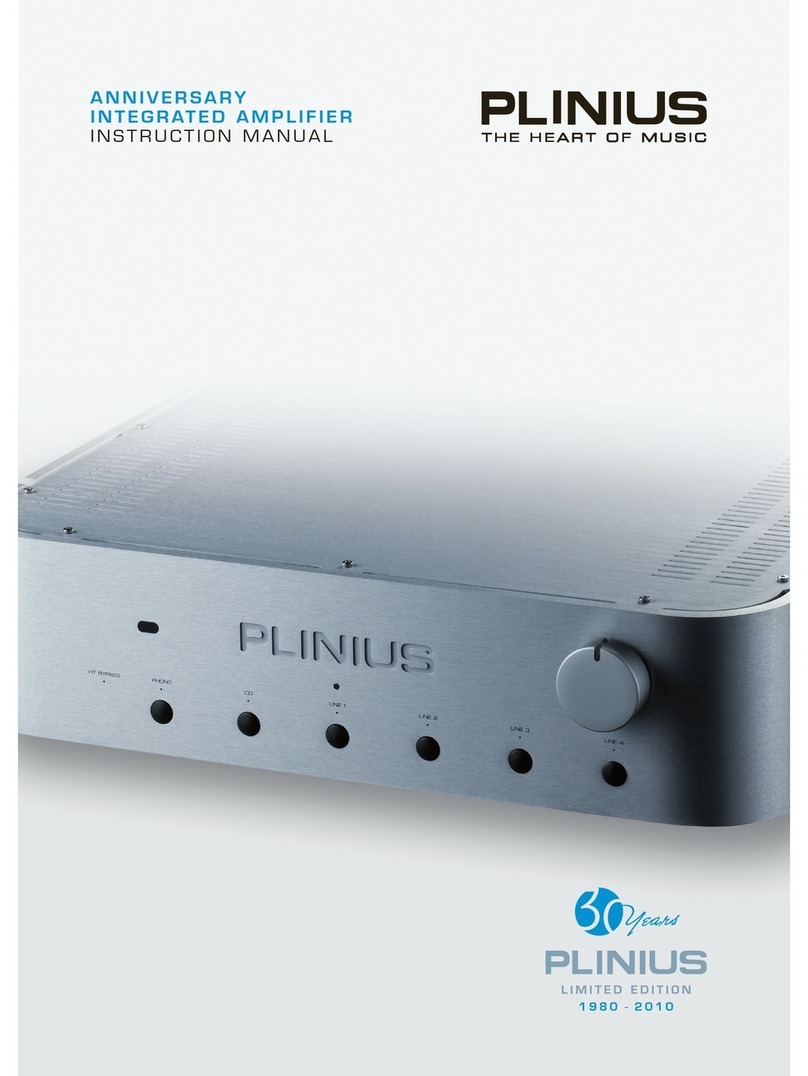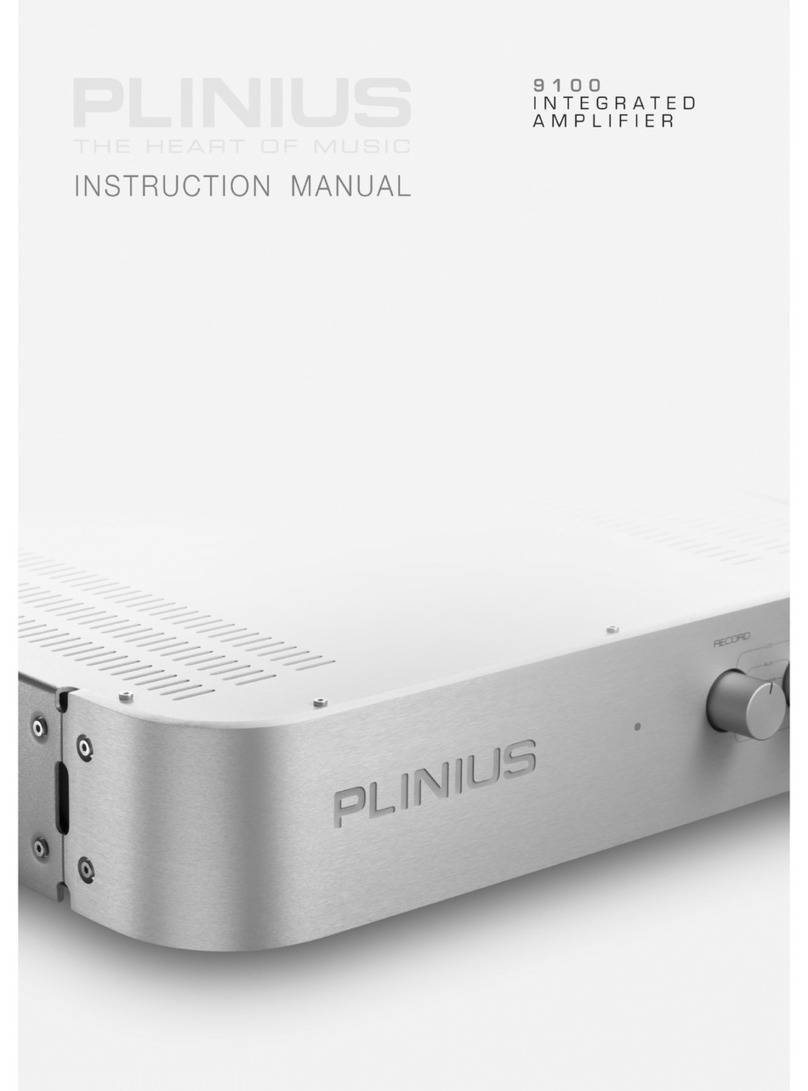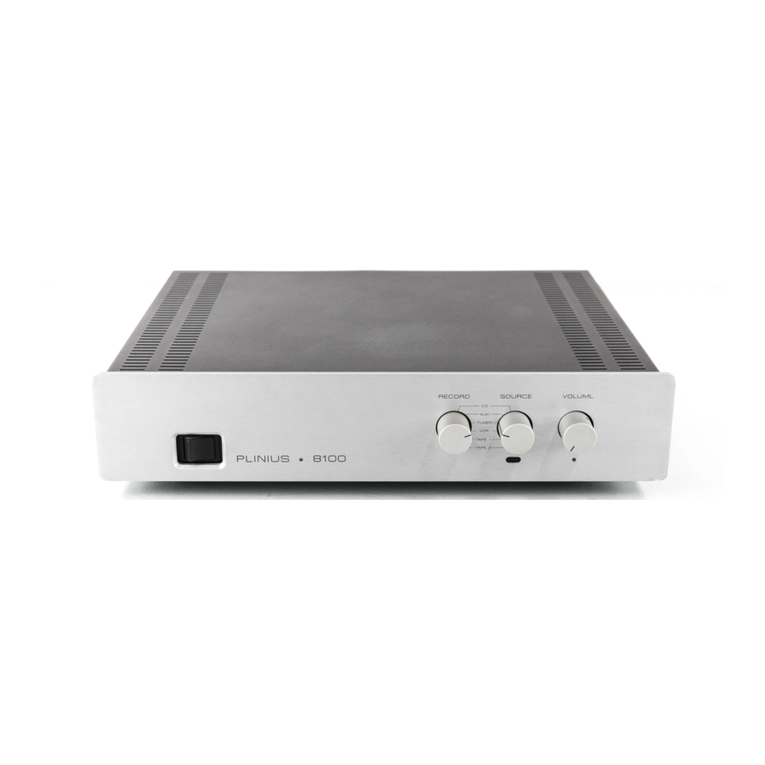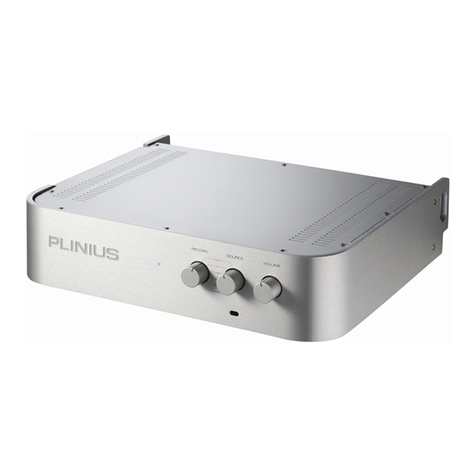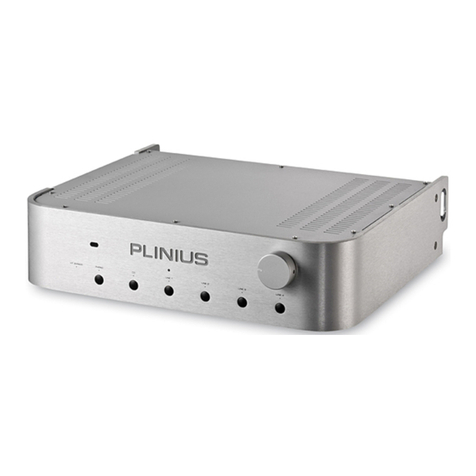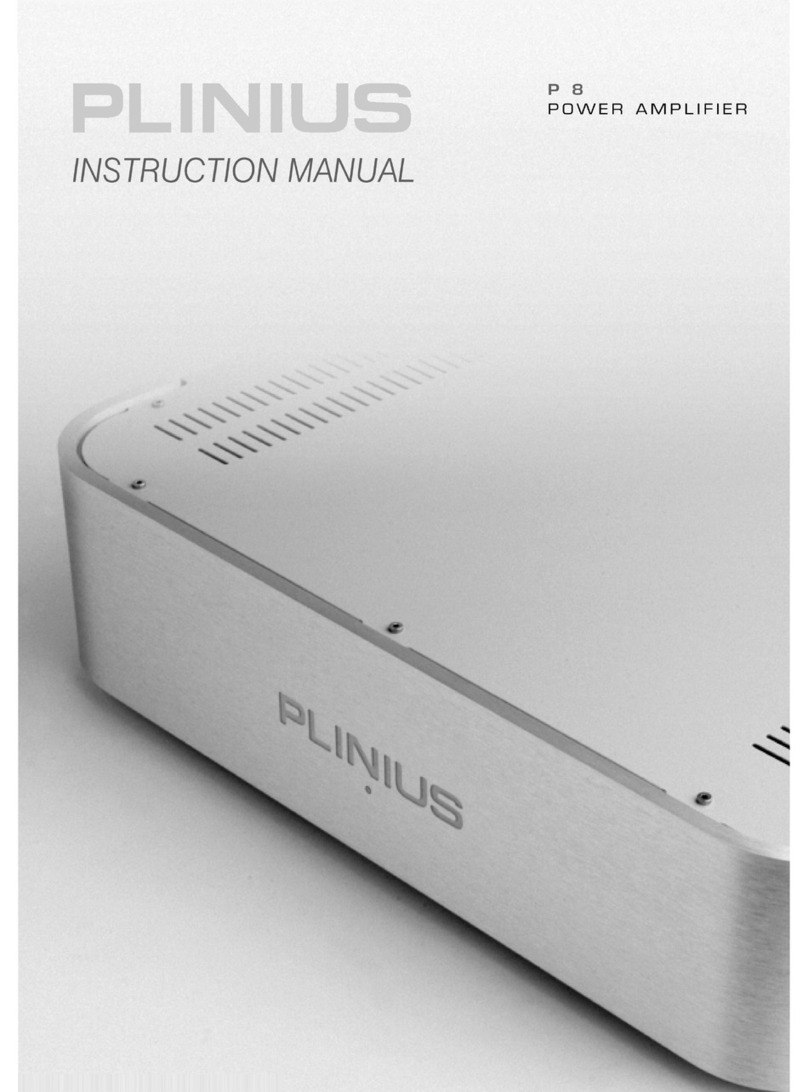FRONT PANEL FACILITIES AND FEATURES CONTINUED
BIAS SWITCH. This switch on the right of the panel alters the operating
Bias of the amplifier. Switch UP is BIAS A/B while switch DOWN is BIAS A.
BIAS A/B position reduces the bias on the output stage to operate the amplifier in class
aB. This is a bias configuration used by the majority of High End amplifier designers for
their products. In "Class AB" the SA-50 produces a very high quality of sound suitable
for all occasions where "super" critical listening is not a priority. The quality of
performance in this mode may exceed that of many other amplifiers so a dual benefit exists
in that this facility provides the user with a much cooler operating temperature and a much
reduces demand on electricity particularly at idle,
(ie. while the amplifier is not reproducing music). This unique feature allows the user to
leave the SA-50 switched ON at all times rendering the amplifier READY for use and
requiring only a few minutes of WARM UP in "class a" before the very best of the
amplifier's sonic qualities may be experienced.
BIAS A position provides a true class a bias to the output stage, therefore ensuring the
optimum performance of the amplifier during all critical or casual listening events. Class
A amplifiers run hotter that class AB amplifiers hence our specially designed and
distinctive heat sinks. Operating the amplifier in BIAS A creates a small number of
precautions that should be observed.
1. On switching the BIAS A the temperature of the amplifier will quickly increase and
the amplifier will become quite hot. Be certain that you have left adequate space around
the amplifier for ventilation. Ensure that no objects are resting on the amplifier and check
that the heatsink (cooling fins) are not obstructed in any way.
2. The current required from the mains / line supply by the amplifier in BIAS A is
now approximately 650 Watts.
This amplifier should not be connected to a wall outlet that is shared with other heavy
current appliances such as heaters or electric motors. If you are in doubt, check with your
Plinius dealer for advice.
Plinius SA-50 instruction manual. Page 6
